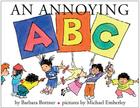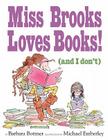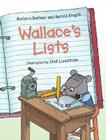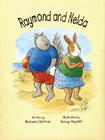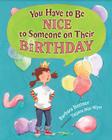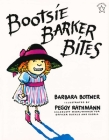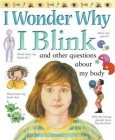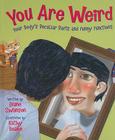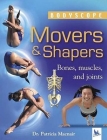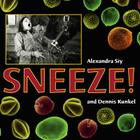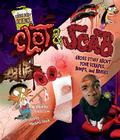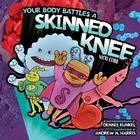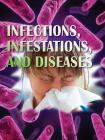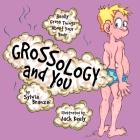Today’s post is part 4 of the Looking at Attention Issues series.
This week I'm using information from HELPGUIDE.org again. I continue to find this site to be a helpful source of information.
FINDING TREATMENT
If your child is struggling with ADD/ADHD, take hope. There are many safe and effective treatments that can drastically improve its symptoms. ADD/ADHD treatment can boost school performance, improve organizational skills, and foster better relationships.
Treatment doesn’t necessarily mean pills or doctors’ offices. Treatment for ADD/ADHD is any action you take to manage the symptoms. And while you may want to seek professional help along the way, ultimately, you are the one in charge of treating ADD/ADHD. You don’t have to wait for a diagnosis or rely on professionals.
UNDERSTANDING YOUR TREATMENT OPTIONS
Treatment for attention deficit disorder isn’t just about seeing doctors or taking medication. The term treatment actually refers to behavior, management, or action—not just to medical approaches. ADD/ADHD treatment can mean changing your habits, altering your frame of mind, talking to others, and learning strategies to help yourself or your child.
You don’t have to pick just one treatment. In fact, the best way to treat ADD/ADHD is to combine several different methods to get the best possible result. You have the power to figure out what works for your child and implement the appropriate treatments. Finding relief for the symptoms of ADD/ADHD is in your hands.
THE POWER OF A POSITIVE ATTITUDE
A positive attitude and common sense are your best assets for treating ADD/ADHD. When you are in a good frame of mind, you are more likely to be able to connect with child's needs.
Keep things in perspective. Remember that your child’s behavior is related to a disorder. Most of the time it is not intentional.
Don’t sweat the small stuff. One chore left undone isn’t a big deal when your child has completed two others. If he didn’t finish the project tonight, maybe he can do it in the morning.
Believe in your child. Think about or make a written list of everything that is positive, valuable, and unique her. Trust that she can learn, change, and succeed.
YOUR LIFESTYLE MAKES A BIG DIFFERENCE
You can begin your treatment for ADD/ADHD today—at home. Evidence shows that eating a healthy diet, getting plenty of exercise, and making other smart daily choices can help you and your child manage the symptoms of ADD/ADHD.
Exercise Exercising is one of the easiest and most effective ways to reduce the symptoms of ADD/ADHD. Physical activity immediately boosts the brain’s dopamine, norepinephrine, and serotonin levels—all of which affect focus and attention. In this way, exercise and medications for ADD/ADHD such as Ritalin and Adderall work similarly. But unlike ADD/ADHD medication, exercise doesn’t require a prescription and its side effect free.
Sleep Regular quality sleep can lead to vast improvement in the symptoms of ADHD. Simple changes to changes to daytime habits go a long way toward resting well at night.
- Have a set bedtime and stick to it.
- Avoid caffeine later in the day.
- Implement a quiet hour or two before bed.
- Limit daytime napping.
- Use the bed only for sleep.
Eating While diet doesn’t cause ADD/ADHD, what and how your child eats does have an effect on her mood, energy levels, and symptoms. Eating regularly is particularly important.
Schedule regular meals or snacks no more than three hours apart. Many people with ADD/ADHD eat erratically. This isn’t good for symptoms of ADD/ADHD or one’s emotional and physical health.
Make sure she’s getting enough zinc, iron, and magnesium in your diet. Consider a daily multi-vitamin if you’re unsure.
Try to include a little protein and complex carbohydrates at each meal or snack. These foods will help her feel more alert while decreasing hyperactivity. They will also give her steady, lasting energy.
Add more omega-3 fatty acids to your diet. A growing number of studies show that omega-3s improve mental focus in people with ADD/ADHD. Omega-3s are found in salmon, tuna, sardines, and some fortified eggs and milk products. Fish oil supplements are an easy way to boost intake.
TRY THERAPY TO LEARN BETTER COPING SKILLS
Treatment for ADD/ADHD can also mean seeking outside help. Professionals trained in ADD/ADHD can help your child learn new skills to cope with symptoms and change habits that are causing problems.
Some therapies focus on managing stress and anger or controlling impulsive behaviors, while others teach you how to handle time and money better and improve your organizational skills.
MEDICATION IS A TOOL, NOT A CURE
Prescription drugs for ADD/ADHD can be helpful in treatment, but it’s important to understand that medication is a tool, not a cure. Medication for ADD/ADHD doesn’t work for everyone, and even when it does work, it won’t solve all problems or completely eliminate symptoms. In fact, while medication for ADD/ADHD often improves attention and concentration, it typically does very little to help symptoms of disorganization, poor time management, forgetfulness, and procrastination.
What you need to know about medication
Everyone responds differently to ADD/ADHD medication. Some people experience dramatic improvement while others experience little to no relief. The side effects also differ from person to person and, for some, they far outweigh the benefits. Because everyone responds differently, finding the right medication and dose takes time.
Medication for ADD/ADHD is more effective when combined with other treatments.
ADD/ADHD medication should always be closely monitored.
If you choose to use medication for ADD/ADHD, that doesn’t mean your child has to stay on it forever. Although it isn’t safe to bounce off and on any drug repeatedly, you can safely decide to stop treating your ADD/ADHD with medication if things aren’t going well. If you want to stop taking medication, be sure to let your doctor know your plans and work with him or her to taper off your medication slowly.
Is medication right for my child?
If you’re considering medication for ADD/ADHD, it’s important to know all the facts, including what medication can and can’t do, what side effects may occur, the safety concerns surrounding stimulants, and what questions to ask your doctor.
Next week, I'll offer some resources for attention issues and ADHD. Please add any of your questions, comments and experiences to the Comments box.
Gail



